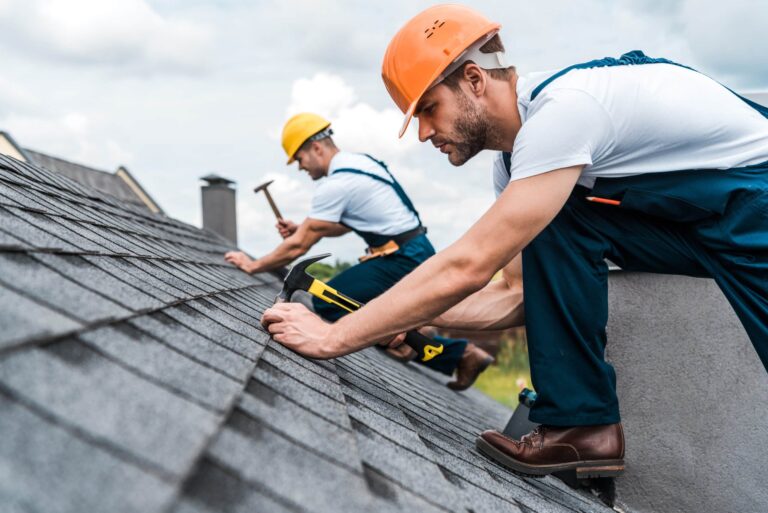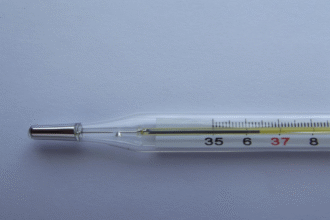Roofing isn’t just about shingles and nails—it’s a complex system that impacts insulation, drainage, energy efficiency, and resale value. Yet for many homeowners, roof-related decisions are uncharted territory.
This comprehensive guide will walk you through every aspect of getting a new roof—from materials and design to budgeting, timelines, and working with contractors. Whether you’re starting from scratch or dealing with a full replacement, you’ll gain the insights you need to make smart, lasting choices.
Why a New Roof Is More Than Just an Upgrade
A new roof does more than fix leaks or refresh your home’s appearance. It adds real value and performance to your property. Here’s why a quality roofing system is worth the investment:
1. Enhanced Energy Efficiency
Today’s roofing materials and technologies can help regulate indoor temperature, reducing heating and cooling costs. Proper ventilation and insulation also reduce moisture buildup in attics, preserving the health of your home.
2. Increased Property Value
A new, professionally installed roof can yield a strong return on investment. For potential buyers, a recently completed roof installation signals lower maintenance costs and long-term peace of mind.
3. Improved Protection
Modern roofing systems are engineered to withstand extreme weather—wind, rain, hail, and even fire. They also prevent water infiltration, which is a leading cause of structural and interior damage.
4. Aesthetic Impact
Your roof accounts for nearly 40% of your home’s exterior appearance. A well-chosen roofing style and color enhances curb appeal and complements your architecture.
Choosing the Right Roofing Material
One of the first—and most important—decisions you’ll make is the type of roofing material. Your choice affects not just cost, but lifespan, maintenance, and energy performance.
Asphalt Shingles
- Most common and affordable
- Available in a wide range of styles and colors
- Lifespan: 15–30 years
Metal Roofing
- Durable and energy efficient
- Resists rot, fire, and insects
- Lifespan: 40–70 years
Tile Roofing (Clay or Concrete)
- Heavy but extremely durable
- Excellent in hot, dry climates
- Lifespan: 50–100 years
Slate
- High-end, natural stone
- Very long-lasting but costly and heavy
- Lifespan: 75–150 years
Wood Shakes or Shingles
- Rustic appearance
- Requires regular maintenance
- Lifespan: 20–40 years
Each material brings different benefits, so your choice should reflect both your personal style and your home’s structural capacity.
Components of a Roofing System
A roof is more than what you see on the outside. A successful roof installation includes multiple layers working together to protect your home:
- Decking: The wooden base layer (usually plywood or OSB)
Underlayment: A water-resistant barrier beneath the shingles
Flashing: Metal strips that seal joints and edges (chimneys, valleys, vents) - Ventilation: Soffit and ridge vents allow airflow, preventing moisture damage
- Drip edge: Directs water away from the fascia and into gutters
- Shingles or surface material: The top layer exposed to the elements
Ensuring each component is installed correctly is critical to long-term performance.
When Is the Right Time for a New Roof?
Some homeowners wait until there’s visible damage before acting. Others replace proactively based on the roof’s age. Here are signs it’s time for a new roof:
- Shingles are cracked, curled, or missing
- Roof is over 20 years old
- Daylight is visible in your attic
- Persistent leaks or water stains
Excessive granules in gutters
Sagging roofline or structural rot
While repairs can fix isolated issues, widespread damage or aging materials usually require a full replacement.
The Roof Installation Process: Step-by-Step
A new roof typically takes one to three days to install, depending on the size and complexity of your home. Here’s what the process looks like:
1. Initial Assessment and Estimate
A roofing contractor will inspect your existing structure, take measurements, and discuss material options. They’ll provide a detailed estimate and timeline.
2. Material Selection and Scheduling
Once you approve the quote, materials are ordered and a date is scheduled. Permits are secured if required.
3. Removal of Old Roofing
On installation day, the crew strips off existing shingles and underlayment down to the decking.
4. Deck Inspection and Repair
The decking is examined for rot or damage. Any weak areas are repaired or replaced to ensure a stable foundation.
5. Underlayment and Flashing Installation
Waterproof membranes and flashing are installed to create a barrier against moisture.
6. Shingle or Material Installation
Your chosen roofing material is installed using manufacturer-recommended techniques. Ridge caps and sealants are applied.
7. Clean-Up and Final Inspection
Debris is cleared, nails and materials are removed, and the site is cleaned. The contractor inspects the work and addresses any final issues.
How to Choose a Roofing Contractor
Your contractor plays a huge role in the quality of your roof. Here’s how to make the right choice:
- Licensed and insured: Always confirm credentials
Local experience: Familiar with regional weather and building codes - Strong reviews and references: Ask for past customer contacts
- Warranty coverage: Both manufacturer and workmanship warranties should be provided
- Detailed contract: Should include scope, materials, timelines, and costs
Don’t automatically go with the lowest bidder—quality roofing is an investment that pays off long-term.
Budgeting for a New Roof
Cost varies depending on material, roof size, complexity, and labor rates. On average:
- Asphalt shingles: $4,000–$10,000
- Metal roofing: $8,000–$20,000
- Tile/slate: $12,000–$30,000+
Other cost factors include:
- Steep pitch or complex layout
- Structural repairs needed
- Removal of multiple layers of old roofing
- Upgrades like skylights or insulation
Be sure your estimate includes all labor, disposal, material, and permitting costs.
Roof Warranty and Maintenance
Once your new roof is installed, protecting your investment should be a top priority. Most manufacturers offer warranties ranging from 20 years to lifetime, depending on the material.
To keep your warranty valid and extend the life of your roof:
- Inspect annually and after severe storms
- Clean gutters to prevent water backup
- Remove debris like leaves and branches
- Check flashing and seals for cracks
- Trim overhanging trees
Many contractors offer maintenance plans for ongoing inspection and care.
What to Expect After Installation
Once your roof installation is complete, you may notice the following:
- A quieter, more insulated interior
- Improved curb appeal
- Reduced heating/cooling costs
- Better moisture control in the attic
You’ll also want to receive documentation, including warranties, receipts, and a final inspection report.
Store this paperwork safely—it can be useful for insurance, resale, and long-term home maintenance.
Final Thoughts
A new roof isn’t just a functional necessity—it’s a major investment in the safety, beauty, and efficiency of your home. Choosing the right materials, working with skilled professionals, and staying informed throughout the roof installation process will ensure the results are durable and worry-free.
Whether you’re building from the ground up or replacing an old, worn-out structure, roof installation is your opportunity to protect everything that matters most—starting from the top down.














